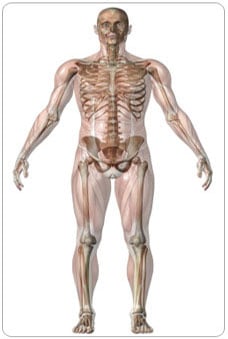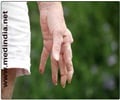Osteogenesis Imperfecta - Features
The main feature of osteogenesis imperfecta is the widely prevalent fragility of the bones, which makes them fracture-prone. These fractures, when they occur, heal properly, but again the new bone that is formed has the same defect. The bones are highly porous as well, which makes it doubly dangerous when it comes to weight bearing. This is especially true of the long bones in the body. Sometimes fractures occur when the baby is walking or even crawling. If a baby is unlucky enough to survive till adulthood, the bones in the body, which have taken a severe beating in the way of fractures, are hideously deformed. This deformity gives a weird shape to the individual.
A second peculiar feature found in osteogenesis imperfecta is the presence of pale blue sclera in the eyes. In this condition, the sclera is very thin and it is for this reason that the choroid protrudes through and imparts a bluish hue to the eye. However, blue sclera are not exclusive to osteogenesis imperfecta, as it is known to occur in fetal rickets, osteopetrosis, Ehlers-Danlos syndrome and Marfan syndrome.
Other features of the disease include deafness, lethargy in ligaments as well as a peculiar electric reaction in the muscles. This is because they do not have a proper bony skeleton for support. There are some abnormalities in the skull as well with the shape of the skull being severely deformed.
Since this is a disease of the calcified tissues, the teeth are also affected, and acquire a grayish tinge. Many patients suffering from osteogenesis imperfecta have a tendency for capillary bleeding. As of now, no known bleeding defect exists in association with the condition, but the former has been known to frequently occur in these patients.









